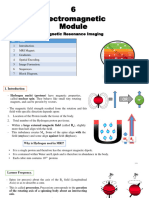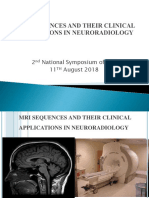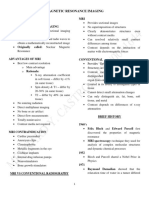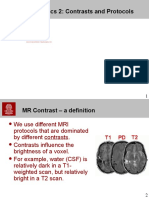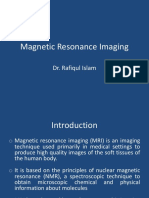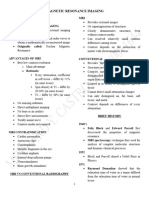0% found this document useful (0 votes)
47 views8 pagesMRI - Imaging Notes
The document provides an overview of MRI imaging, detailing the principles of Nuclear Magnetic Resonance (NMR) and the components involved in MRI, including magnetic fields, RF pulses, and detection methods. It explains the relaxation processes (T1 and T2), gradient applications for slice selection and spatial encoding, and the concept of k-space for data storage. Additionally, it covers various MRI applications, safety considerations, and the steps involved in the MRI imaging process.
Uploaded by
pedrochecarifa03Copyright
© © All Rights Reserved
We take content rights seriously. If you suspect this is your content, claim it here.
Available Formats
Download as DOCX, PDF, TXT or read online on Scribd
0% found this document useful (0 votes)
47 views8 pagesMRI - Imaging Notes
The document provides an overview of MRI imaging, detailing the principles of Nuclear Magnetic Resonance (NMR) and the components involved in MRI, including magnetic fields, RF pulses, and detection methods. It explains the relaxation processes (T1 and T2), gradient applications for slice selection and spatial encoding, and the concept of k-space for data storage. Additionally, it covers various MRI applications, safety considerations, and the steps involved in the MRI imaging process.
Uploaded by
pedrochecarifa03Copyright
© © All Rights Reserved
We take content rights seriously. If you suspect this is your content, claim it here.
Available Formats
Download as DOCX, PDF, TXT or read online on Scribd
/ 8




